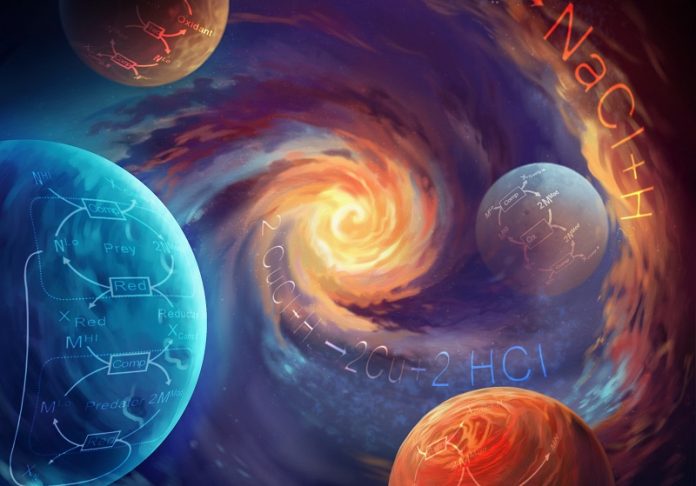
Have you ever wondered if there’s life on other planets?
Scientists at the University of Wisconsin–Madison are asking the same question, but they’ve taken an exciting step forward.
They’ve come up with a “recipe book” that lists hundreds of ways that life could begin. This could help us figure out where to look for life on other planets!
Betül Kaçar, a scientist at UW–Madison, and her team say that life starts with a mixture of simple ingredients.
But for life to keep going, these ingredients have to keep mixing in a special way, over and over again. Imagine baking a cake.
You need the right ingredients, the correct oven temperature, and a perfect amount of time. It’s the same for life!
The scientists talk about something called “autocatalytic reactions.” In simple terms, these are chemical reactions that help themselves.
Imagine you have a group of rabbits. If these rabbits have babies, those babies will grow up and have their own babies. The number of rabbits will keep increasing!
Autocatalytic reactions are like this. They produce molecules that make the same reaction happen again, speeding up over time.
Before, scientists thought these kinds of reactions were very rare. But this new research shows that they’re not as rare as we thought. You just have to know where to look! The team focused on special reactions called “comproportionation reactions.”
These are reactions where two compounds with the same element but in different states combine to form a new compound. This new compound then helps start the whole reaction again.
Why is this important? Because if we know the kinds of chemical reactions that could lead to life, we’ll know better where to look for life on other planets! We could target planets that have the right conditions for these reactions to happen.
Kaçar and her team aren’t stopping there. They’re part of a big project supported by NASA called MUSE. They’ll be looking closely at reactions that involve elements like iron and molybdenum. They’re also eager to see what other scientists will discover using their “recipe book.”
We might never know for sure how life started on Earth because we can’t go back in time. But with these experiments, we can get clues about how life could appear under different conditions, even on other planets. That’s like a real-life science adventure!
So, the next time you look up at the night sky and wonder if anyone is out there, remember that scientists are working hard to answer that question. And they’re using the “recipe book” to help guide the way.
As Carl Sagan, a famous scientist, once said, “If you want to bake a pie from scratch, first you must create the universe.” Well, these scientists are baking their pies to understand the universe, and maybe find life beyond Earth!
The study was published in the Journal of the American Chemical Society.
Follow us on Twitter for more articles about this topic.
Source: University of Wisconsin-Madison.



